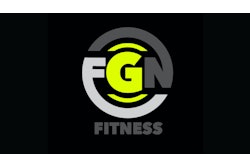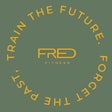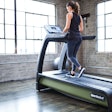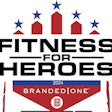Cross training can help members and clients improve health and fitness, and prevent workout boredom.
EXERCISE CAN PROVIDE a total-body tune-up. It can strengthen the heart, bones, muscles and joints. It can enhance cardiovascular (heart-related) fitness, build muscle, reduce body fat and aid in flexibility. But to see all of these gains, cross training is a must.
In cross training, two or more types of exercise are performed in one workout, or used alternately in successive workouts. A distance runner in training, for example, may also lift weights twice a week, perform daily stretching exercises and perform high-intensity bicycle sprints every Tuesday. Even if you have clients who are indoor athletes, these examples can be modified to work for them.
Exercisers turn to cross-training to fight boredom, but also because no single exercise can yield all the potential benefits of many exercises. Running, for example, enhances aerobic fitness (which improves cardiovascular health and requires sustained use of large-muscle groups, like those in the legs). But running contributes little to developing muscle mass, especially in the upper body. Running also creates a slight muscular imbalance in the legs, as the hamstrings and calf muscles develop at a faster rate than the quadriceps and shins. Weight training helps address this imbalance. Additionally, strong quads and hips help protect these areas from a variety of injuries. Strong legs also offer protection from the possibility of injury when running at a fast pace downhill.
Although cross training seems to make perfect sense, not all experts agree on its benefits. Cross training contradicts the time-honored principle that training should be limited in scope and closely aligned to the performance your clients want to improve. This is know as task specificity (typically referred to as the SAID principle: specific adaptation to sport-specific demands), and it means that, if your clients want to be good distance runners, they need to run mainly long distances. According to this principle, non-specific activities for runners, like weight training or swimming laps, are a waste of effort because they do not make someone a better runner. However, recent research demonstrates that a well-balanced periodized program will enhance the primary activity. Besides, the typical fitness enthusiast is interested in total-body conditioning, rather than sport-specific training.
Many sports scientists believe that cross training may lead to optimal effort, because peak performance in any physical activity usually involves more than one physical attribute. A marathoner, for example, may need a strong sprint to the finish line, and hence, high levels of aerobic and anaerobic fitness (the ability to perform intense bursts of activity). Also, weight training can help reduce upper-body muscle fatigue while running. A strong upper body helps minimize fatigue and stiffness in the arms, shoulders and neck areas and that, in turn, enables a runner to maintain form late in a marathon or long run. Legs move only as fast as the arms swing. The runner with a strong upper body will find more power for the sprint to the finish line, an easier crank up a hill and better balance when running on trails. In short, all of these add up to an ability to run faster and more efficiently. Because little overlap exists among attributes like aerobic fitness, anaerobic fitness and strength, cross training is required.
The cross-training edge
Cross training offers advantages for both competitive athletes and those who train simply to keep in shape and manage their weight. Cross training helps them to do the following:
Planning a program
A cross-training program usually involves a combination of different exercises, each performed for a specific period. The exercises can all be aerobic, for example, but they usually include other types (Table 1).
To improve aerobic fitness, for example, clients can cycle for 30 minutes. To increase strength, they can lift weights for 30 minutes. Both can be done on the same or separate days. Depending on the level of fitness and the desired result, varying the frequency, intensity and duration will provide optimal outcomes. If performed on the same day, clients should change the order in which they are performed.
Cross training also can include diverse exercises in a single routine to promote aerobic fitness, strength and muscle endurance. For example, in circuit training, have clients perform high-repetition, low-resistance weight training, and move quickly to the next exercise. Another example is step aerobics using light dumbbells. (However, according to the latest research, training with multiple activities will compromise the results, versus training one specific activity per training cycle. Not to diminish the efficacy of cross training, but this must be kept in mind throughout the process.)
Tailor cross training to the needs and interests of the clientele. Select exercises from each of the types in Table 1 as an example, but don't limit the program to the activities listed. Then build a program. (See Cross-Training Sampler.) When working with competitive athletes or experienced exercise enthusiasts, be sure to consult them on their previous experiences and workout schedules. This will keep the program consistent for them, and show efficacy to their program.
Precautions and considerations
Benefits of specific sports
The following are great cross-training options that, when infused carefully into a client's workout routine, will enhance overall training. Remember, it is vital that clients receive instruction on the correct use of equipment. Also, to receive the maximum benefit while minimizing chances of incurring injury, it is also important that clients perform activities using proper form, technique and posture.
Cycling. Cycling works running-related muscle groups, such as the quadriceps and shins, both of which don't develop as rapidly as the calf muscles and hamstrings. Cycling also strengthens the connective tissue of the knee, hip and ankle regions, thus reducing the risk of injury. After a stressful run, cycling also loosens fatigued leg muscles. Key points to remember: Since it's much more difficult to run after cycling, have clients run first before getting on the bike (unless they are duathletes/triathletes, and even so this change can be a welcome relief from the usual). Be sure they spin easily as opposed to grinding the big gears.
Swimming. Swimming is one of the best cross-training activities, for several reasons. Swimming enables exercisers to build muscular strength and endurance while improving flexibility. It is especially recommended for those who want to prevent injury, are pregnant, are recovering from an injury, are suffering from joint or bone conditions, or are overweight and want to exercise in a weightless environment. Keep in mind that, compared to other cross-training activities, clients' heart rates may not reach as high a level while swimming (typically 10 to 20 beats per minute less than what it is for dry land activities) due to the loss of gravitational force, the horizontal position and the cooling effect of the water temperature. Nevertheless, what truly counts is that the heart, lungs and muscles are still processing oxygen.
Deep-water running. Deep-water running is just what the doctor ordered for rehabilitating many injuries. Because there is no shock from foot strike, water running is a great alternative to dry-land walking or running activities. For either purpose, it should be based on the client's current level of ability and present dry-land program. While it is possible to run in the water without floatation aids, these devices (e.g., vests, belts, etc.) make the workout easier.
Rowing machine. Rowing is another great cardiovascular activity. It strengthens the hips, buttocks and upper body, while sparing the legs of heavy pounding. Be sure clients learn proper rowing technique to maximize the benefits of this activity.
Nordic Track ski-simulator machine. Cross-country ski machines provide a challenging workout that is effective in building and maintaining aerobic conditioning and endurance, while strengthening the muscles of the upper and lower body. Because the exercise requires the ability to balance and coordinate dual-action movements of the upper and lower extremities, proper form must be used. This is a great workout for individuals interested in supplementing their training.
Stair stepper. Stair stepping provides a great cardiovascular workout while being rather gentle on the skeletal system. To achieve maximum benefits, proper form and posture must be used. For an even more intense and regulated step, clients can try the StepMill machine.
VersaClimber. Using a VersaClimber provides a total-body workout because all the major muscles of the upper and lower body are fully engaged and, thus, strengthened. Because of the coordination required by the arms and legs (climbing against gravity, similar to the motion of ascending a ladder), it can be a challenging machine to learn to use correctly. Again, be sure clients learn proper technique.
Elliptical trainer. Elliptical trainers provide a great total-body cardiovascular workout. Their oval-like (ellipse) motion provides the user with the feel of classic cross-country skiing, stair climbing and walking -- all in combination. The elliptical trainer can be programmed to operate in either a forward or backward motion, providing a low-impact workout for all the major muscles in the legs. The backward motion emphasizes the glutei muscles (buttocks). Clients can achieve a great upper-body workout by using the two poles located on each side of the machine in conjunction with the leg motion.
Cross training and strength training
The related benefits of cross training and total-body conditioning through strength training are important to realize.
Increase in muscle mass. The increase in lean muscle mass that results from strength training is the key to the body's ability to metabolize glucose and thus "burn" fat. This occurs because muscle cells require more energy (and also use more calories) than fat cells.
Body composition changes. Muscular strength declines approximately 5 percent per decade for the untrained individual. Strength training slows down this process, even as people reach their senior years.
Bone protection. Weight training helps protect bones. This is an important benefit, particularly for women (though men can get osteoporosis, as well), as decreased estrogen production causes bone demineralization. This, in turn, increases the risks of osteoporosis and the additional risk of incurring stress fractures. Muscles tugging on bone structure as a result of weight training facilitates bone regeneration.
Diabetes and heart disease prevention. According to the literature, weight training seems to reduce the risk factors for adult-onset diabetes and heart disease.
Final thoughts
Exercise can strengthen the cardiovascular system, bones, muscles and joints; reduce body fat; and improve flexibility, balance and coordination. But to achieve all of these benefits, cross training is the means to the end. As with any new program, starting conservatively will bring the best results, while minimizing injury and maximizing enjoyment. Remember the fun factor and adjust the frequency, intensity and duration predicated on the client's response.
Table 1. Types of Exercises for Cross-Training Programs
Table 2. Cross-Training Sampler
Here is a cross-training program for all-around conditioning. It can help boost aerobic fitness, muscle strength, muscle endurance and flexibility, and also assist in weight control by helping use up a fair number of calories each day.
| Day of the week | Activity | Minutes |
| Monday | Brisk walking with hand weights | 20-30 |
| Stretching | 5-10 | |
| Upper-body weight training | 30 | |
| Tuesday | Running at a steady pace | 20-30 |
| Stretching | 5-10 | |
| Lower-body weight training | 30 | |
| Wednesday | Swimming | 20-30 |
| Yoga | 20-30 | |
| Thursday | Bicycling, rowing or cross-country skiing* | 20-30 |
| Stretching | 5-10 | |
| Friday | Brisk walking | 20 |
| Upper- and lower-body weight or circuit weight training** | 20-30 | |
| Saturday | Running at a varied pace | 30-45 |
| Stretching | 5-10 | |
| Sunday*** | Walking comfortably | 30-45 |
| Yoga | 20-30 |
*Actual activity or machine simulator. **High-repetition, low-resistance weight training with little rest between exercises. ***Can be a complete rest day.




































